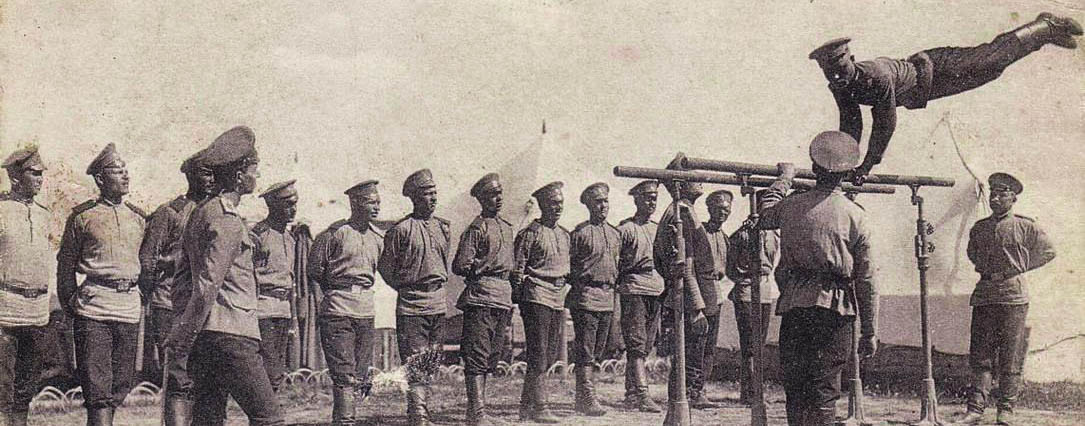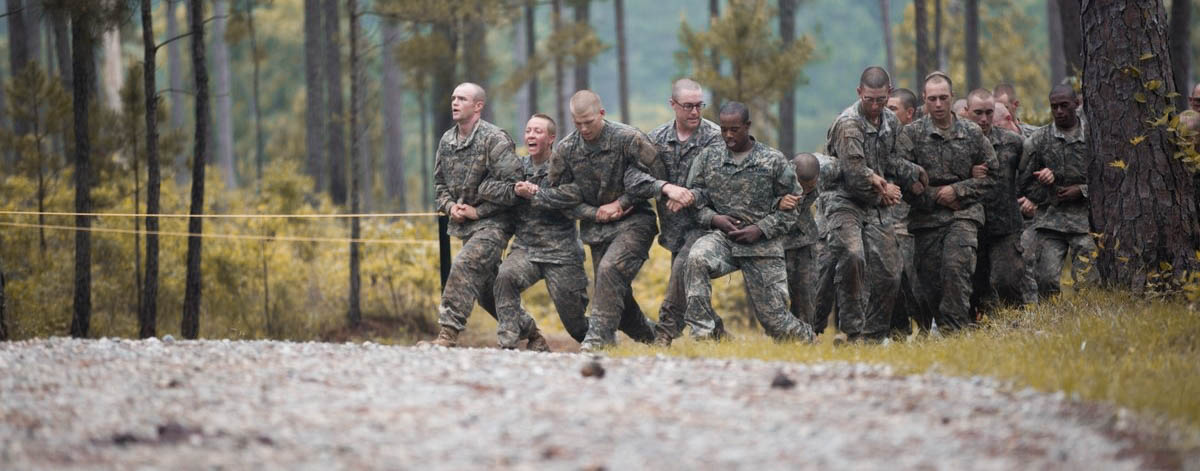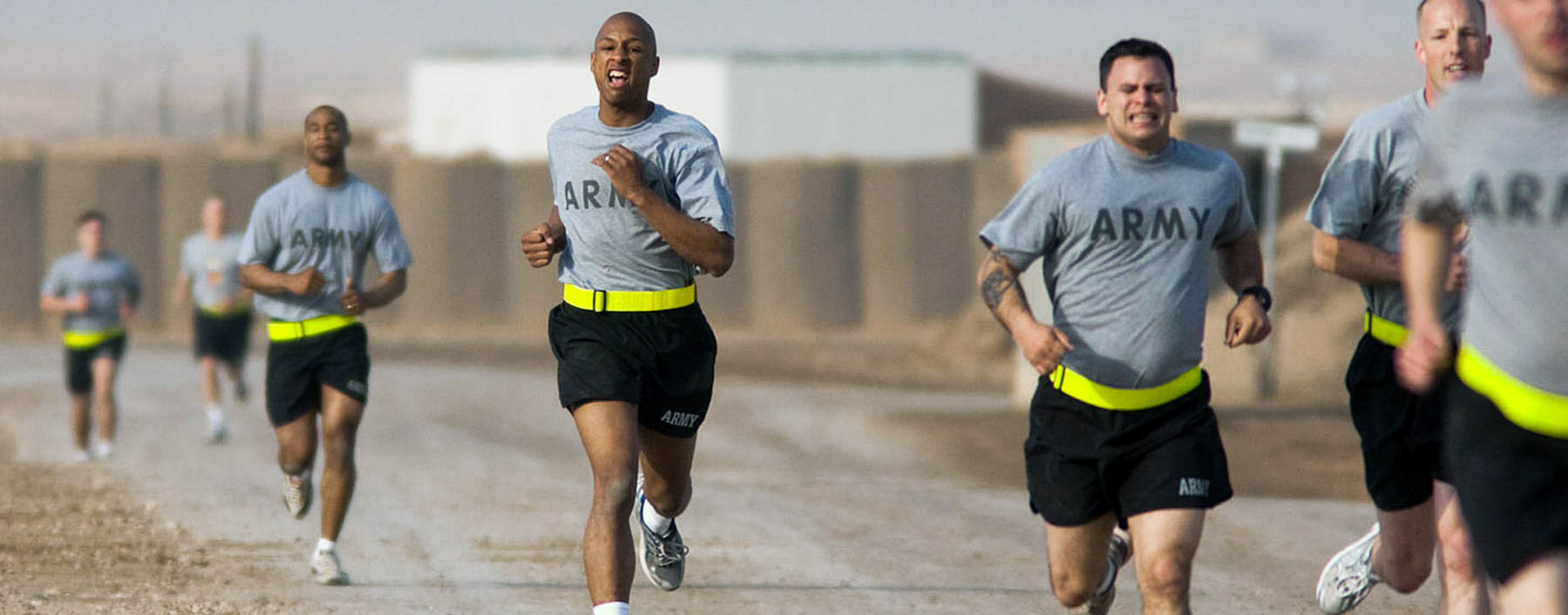Evolution of Military Gymnastics: Part 1
At nearly every juncture during my last decade in the military, the topic of how to adequately test soldiers’ fitness has been a constant debate. As a former leader in the army and performance coach, it was laughable at times how one-sided the old PT test was, saying basically, "so long as you can run fast (relative to your age), you must be fit.”
Fitness for the military was simply a score rather than a life-governing concept. Smoke, drink and eat as unhealthy as you want, but so long as you run a 13-minute two-mile, you are considered fit by the military’s standard.
Though the type and tactics of warfare evolve, the physical requirements of combat have never really changed. Sprinting, jumping, carrying, walking and lifting, all while thinking, problem-solving and making decisions have been elements of every conflict from Thermopylae to Baghdad. What has changed is the culture of our military, from gender homogeneity to the character and value of its leaders in the current political environment. Sports science has evolved exponentially in the last three decades but bureaucracy has prevented testing innovation from taking hold.
Tests in any organization are a valuable tool to assess progress and determine readiness. The United States Military is the largest professional organization on the planet that regularly utilizes physical fitness as an evaluation tool for professional progression and as such, the tests are subject to the Byzantine and seemingly endless bureaucracy of the government.
But by consistently readjusting the way it views success, the military can perpetually see itself as infallible. Numbers need to favor a certain group of people, leaders need to appear strong and "fit" if they are meant to lead soldiers effectively.

Adapted in 1920, the first "Individual Efficiency Test" for all soldiers consisted of a 100-yard run, running broad jump, wall climb, hand grenade throw and obstacle course. The first scientific efforts involved testing of four-hundred soldiers and a factor analysis of twenty-five individual test items. In 1944, this resulted in a seven-item test (pull-up, burpee, squat jump, push-up, man-carry, sit-up and 300-yard run) with a 100-point scoring system. In 1943, women were encouraged to take a "self-assessment" consisting of push-ups, bent knee sit-ups, wing lifts, squat thrusts, running and a stork stand. In 1946, age-adjusted standards were introduced and in 1965 semiannual fitness assessments were mandated. The number of tests proliferated in the 1969-1973 period with seven separate assessments. The current APFT consisting of push-ups, sit-ups, and a two-mile run was introduced in 1980 and alternative tests for those with physical limitations in 1982.
The trend I'd like to highlight when looking at the evolution of this test is the shift in focus from overall agility to endurance over the last three decades.
It is no secret that as we age, we become less agile. The agility required to conduct lateral dashes over short distances and short bursts of energy is much greater than that required to succeed at unidirectional endurance events. The current PT test, which has come under much scrutiny in the past several years, tests single planes of movement and unidirectional aerobic endurance.

But what if this current PT test wasn’t really designed for the lean and mean but more so for old and broken? What if this test, which has its origins in the immediate wake of the Vietnam War, was designed to allow older leaders to remain strong in front of their soldiers and as a catch-all for the rest of the military?
If we overlay the periods of conflict with the timeline of the PT test’s evolution it sheds light on priorities. Under current law, VA recognizes the following wartime periods to determine eligibility for VA Pension benefits:
- Mexican Border Period (May 9, 1916 – April 5, 1917, for Veterans who served in Mexico, on its borders, or adjacent waters)
- World War I (April 6, 1917 – November 11, 1918)
- World War II (December 7, 1941 – December 31, 1946)
- Korean conflict (June 27, 1950 – January 31, 1955)
- Vietnam era (February 28, 1961 – May 7, 1975, for Veterans who served in the Republic of Vietnam during that period; otherwise August 5, 1964 – May 7, 1975)
- Gulf War (August 2, 1990 – through a future date to be set by law or Presidential Proclamation)
If you notice, as Vietnam winded down until the start of the Gulf War, the Army adopted its most current test of evaluating fitness effectively creating a "peacetime" army test. From a sports science outlook, the requirement for agility went down and the requirement for endurance went up. The broader question I’d pose is that due to the high turnover rates following WW2 and Vietnam, did military leaders create a test that everyone could pass? Is the current Army PT test a result of the US Army changing standards to make itself successful?
According to the Department of the Army, AR 600-9 Army Physical Fitness and Weight Control Program (1976, or 4 years prior to the birth of the current Army PT Test), 1-1. Indicative of a growing concern over potential harmful effects of exhaustive exercise on older personnel (IE: forty years of age or older), section 1-3.b cautioned commanders to be aware of excessive physical exhaustion, stating that “pride and competitiveness may drive individuals beyond their limit of endurance with serious consequences.”

One example of a sign/symptom of over-exhaustion was an exercise pulse rate greater than one hundred and forty beats per minute. From a sports science standpoint, this is moderate to heavy level of physical exercise, not over exhaustion. Mind you, in the late 70's, soldiers over forty were not mandated to take PT tests. Over the years, that changed. The military needed to be fit but to appear fit, it needed a new way of measuring it.
Recently the Army has taken another stab at revamping the standard PT Test. By October 2020, all soldiers, regardless of age or gender, will be required to take the new Army Combat Fitness Test -- a six-event test that measures muscular strength, muscular endurance, power, flexibility, coordination, speed, agility, cardiovascular endurance, balance and reaction time. This event looks to broaden the scope and measure different aspects of overall fitness. It is nice to see this next round of testing evolution take root as it most certainly has been a long time coming.





